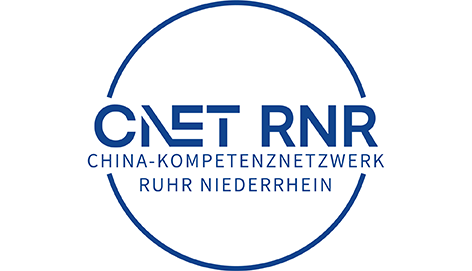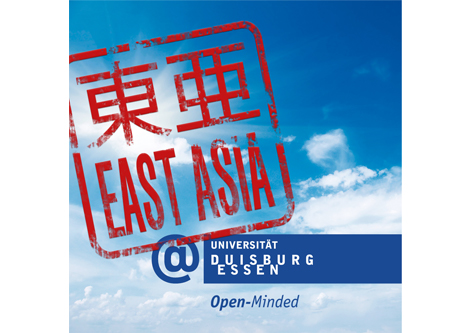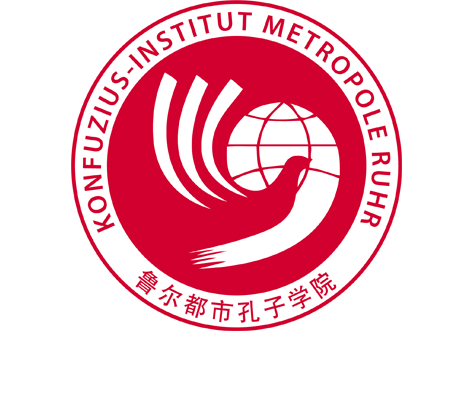Research Fellows at the IN-EAST School of Advanced Studies
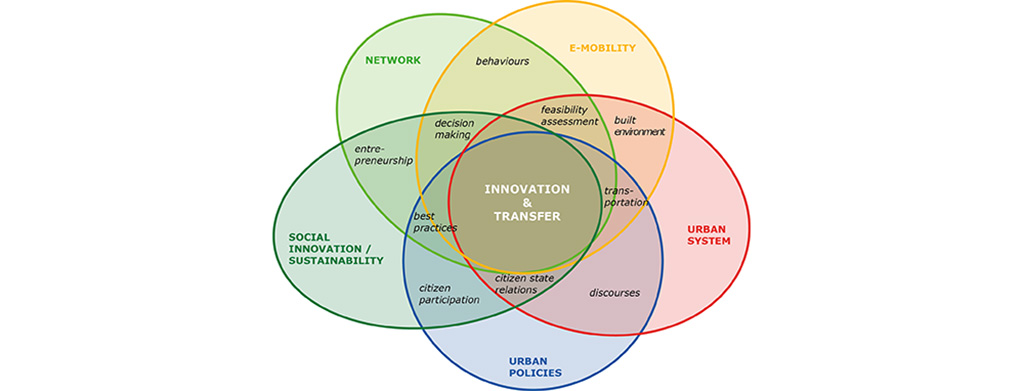
The Research Fellows
Hiroshi Kitamura Fellows
| Dr. Peng Lu | 23.7.–11.8.2017 |
| Lijia Tan | 1.12.2017–31.3.2019 |
| Prof. Dr. Barbara Buchenau | 1.4.–30.9.2018 |
| Prof. Dr. Jens Martin Gurr | 1.4.–30.9.2018 |
| Prof. Kenneth Paul Tan | 9.6.–9.7.2018 |
| Dr. Martin Hemmert | 16.6.–15.7.2018 |
| Prof. Miyo Aramata | Feb. 2019 |
| Dr. Keiichi Satoh | March 2019 |

(until Dec 2019)
Dipl.-Ing. Katharina Borgmann
Contextual Planning and Urban Design: The Impact of Global Agreements and Frameworks on Dynamics of the Chinese Urban Development
This research focuses on the ongoing actions and initiatives of the Chinese authorities, and on their impact on the Chinese urban development and city-planning community. The research analyses the expected impact of widely-accepted international agreements, as well as of the phenomenon of the global exchange of urban concepts and their local contextualisation and implementation, on the creation of liveable and sustainable cities.
A central aspect of the research is investigating how the character and directions of continued urbanisation might influence contextual city-building in China by addressing the question how sustainable development and contextual planning are connected. Planning approaches that are embedded in local contexts are vital for sustainable development and use of the environment; the United Nations New Urban Agenda calls for ‘context-specific and culturally sensitive sustainable solutions’ (UN 2016, 30) to achieve the Sustainable Development Goal 11 (see Figure 1 and Figure 2). These issues are increasingly acknowledged in China, especially after the country has not only signed the Paris Climate Agreement (see Figure 3) but also ratified and agreed to implement the New Urban Agenda (Habitat III, Quito 2016; see Figures 4, 5, 6). On top of that, the party has modified its approach to city-building, criticising uncritical implementation of foreign architectural approaches or the popularity of gated communities (Zheng 2016). All this foretells important and broad changes in the way Chinese urban development is conceptualized, planned, and managed in China’s next phase of urbanisation.
In order to understand the driving forces behind the urbanisation phase in China that has been initiated in 2016 (NPC 2016) and therefore to answer the research question, a broad set of data is analysed. The design of the research is a deductive, qualitative, case study-based approach, while the diversity of the potential resources, together with the character of the topic, call for the application of multiple methods (e. g. numerical analysis of statistical data, path-dependence analysis of strategic documents, or examination of literature). Expert interviews are viewed as particularly valuable as they reveal the practitioners’ view of which changes are likely to impact their work the most.
To summarise, this research analyses how the various recent steps of the Chinese authorities will impact the next urbanisation phase in China on the local level; looking at the adaptation and translation of spatial concepts to the Chinese context.
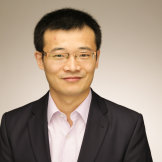
(until Sep 2020)
Jun.-Prof. Dr. Shuanping Dai
Emergence of New Products and Agile Production Innovation Conjuncture: Evidence form Low-Speed Electric Vehicle Industry in Shandong Province, China
When discussing proper institutional environments for innovation, the fundamental question is how (supportive) institutions emerge, in particular, in the platforms or countries where formal institutions are weak. Hence, researches must pay attention to the process of how institutions emerge and how they support innovative endeavours. Besides the concerns about the institutional setting, we should also understand innovation as an interactive process; innovation emerges from social interactions among firms, individuals, and research units, etc., and roots in iterative processes of searching, learning, and knowledge transfer. Such above are the major departure points of my project.
At the second stage of the project, I not only continue on the network approach to innovation studies, but also extend perspectives to investigate how firms in China develop and upgrade their products. For example, my project studies how the low-speed Electric Vehicles (EV) companies in Shandong province started to learn the knowledge gradually, and how they interacted with local and central governments and regulation departments for obtaining a production certification. Those dynamic interaction processes may enrich our understanding on innovation process.

(until May 2018)
Dr. Momoyo Hüstebeck
Innovating Representative Democracy – The Impact of Deliberative Innovations
Even in consolidated democratic states, the content of democracy is fluid. Representative democracies such as Japan and Germany are continuously faced with endogenous (e.g. increasing social gap) and exogenous challenges (e.g. globalization, terrorism). Social, political and economic changes or needs have transformed the existing state systems over time. As a main challenge for democratic representation, citizens have become more disillusioned about democratic institutions and actors. Consequently, classic democratic participation such as going to the polls or a party membership has been declining.
The growing dissatisfaction with politics in the current democratic state systems has intensified discussions in academia and polity about new policies beyond the usual path. Democratic innovations are supposed to counteract the decline of legitimacy. Democratic innovations are defined as a variety of new forms of citizen participation and deliberation. Complementing representative democracy, their implementation is conceived to increase and intensify citizen participation and deliberation. Common empirical samples are participatory budgeting, citizen assemblies or experiments with e-democracy.
Although democratic innovations have increasingly attracted attention in European political science, systematic or comparative works beyond Western democracies are limited in number. Therefore, the particular interest of this postdoctoral project lies in the cultural dimension of the sociopolitical framework and the country-specific implementation and outcome in Japan and Germany. The comparative research project meets the need for a more in-depth, comparative empiricism by investigating the conditions for implementing democratic innovations in Japan and Germany. Based on empirical cases, it evaluates the reform processes against the backdrop of the normative hypothesis that democratic innovation heals the democratic malaise. In a wider scope, the interactions between participatory/deliberative and representative democracy are the major focus.

(until March 2019)
Dr. Beate Löffler
Asynchronies of the Japanese City: Innovation and Persistence
The city of today resembles a ‘living organism’ involved in continual processes of change and adaptation. Yet most cities date back for centuries at the same site, are still located on the banks of the same river or the slope of the same hill, even if they outgrew the initial setting. Today’s urban life happens in streets that were surveyed on behalf of one or another ancient emperor, in houses whose foundations date back a millennium and celebrate heroes or saints in temporary patterns that might be formed by long gone centuries and obsolete political systems.
If we aim to understand the workings of innovation in an urban environment, especially with an attempt at development planning, it makes sense to look at the urban asynchronies and to ask for answers in cities like Tokyo that seem to adopt to change much faster than their European counterparts.
Based on the hypothesis, that the dynamics of Japanese cities might result from cultural perception as much as from actual changes in urban fabric, the project looks at modern Tokyo as a case study. It superimposes four levels of potentially different time patterns: Long-term developments like infrastructure or land reclamation, medium-term phenomena like dwellings and refurbishment of urban space, narrations of identity and city marketing, and the social practices of perceiving the urban within the fields of urban studies.
After relating the evidence on the built environment to narrative sources, I expect to find an intermingled discourse of contradicting perceptions and explanations in regard to the persistence of built environment. This should point towards the argumentation strategies for and against urban innovation and help improving development strategies that integrate citizens’ needs for cultural stability.

(until March 2019)
Giulia Romano, Ph.D.
The Appropriation and Adaptation of Citizen Participation in a Chinese City: A Step to “Democratic Deliberation”, an Instrument of Power Reassertion and/or Something Else?
Inspired by studies dedicated to residents’ participation in urban renewal in European countries, this research would like to extend these analyses to the Chinese context. In particular, the project puts into question the meaning(s) and uses of residents’ participation in urban planning and renewal, investigating the practices, the instruments and the aims of the local administrations. Studies on French experiences of residents’ participation in urban renewal showed that participation is mostly employed as a means to increase the legitimacy of renewal projects decided by the cities and by the central government. Hence projects are not co-decided with residents, but rather imposed on them. Studies on European experiences also showed that residents’ participation serves the purposes of state restructuring and progressive withdrawal from welfare provision, which supported the externalisation of social services and the development of a political discourse encouraging citizens’ self-support.
Basing on this comparative perspective, this research project hence interrogates the introduction of practices of residents’ participation in urban planning and renewal in China, looking at the purposes served by such practices as well as at the interpretations given to “residents’ participation”.

(until March 2019)
Mira Schüller, M.Sc.
The Impact of Electrified Vehicles on Future Traffic in China and Germany
Parameters defining customer needs for electrified vehicles like energy consumption, range, environmental friendliness or costs are mainly depending on the driving behavior, vehicle characteristics and local marginal conditions like traffic and road conditions or temperature (Ried et al. 2013, Ernst et al. 2013). These data differ for each region and individual user and vary from values derived through synthetic test cycles (Hesse et al. 2012). Accordingly, for current market analysis and future trends prediction, different user profiles have to be considered and analyzed (Schüller et al. 2017).
Previous research contain a comparative empirical study on driving data and a systematic investigation of the factors of influence and local framework conditions in China and Germany. The results identify the differences between the regions. For a better representation of real driving behavior, transient driving cycles are generated (Schüller et al. 2018). Based on simulations using these driving cycles, drivetrain concepts can be evaluated and scenarios of future vehicle trends analyzed. However, in scenario development including drivetrain concepts, the traffic as an important influencing factor for driving behavior and therefore consumption, emissions and costs is usually considered static.
A further step to a systematic evaluation is the integration of the results in a traffic simulation model. Therefore, vehicle models are defined by parameters like the maximum velocity, acceleration, the dimensions and the powertrain. Different kinds of vehicles are parametrized for different vehicle classes and drivetrain concepts for China as well as for Germany. Besides of the vehicle models, driver models are built and parametrized for various driver characteristics. Therefore, a method for driver modelling based on empirical driving data has to be developed.
The main target for the traffic simulation are conclusions about the impact of new mobility concepts and the share of electrified and automated vehicles on the traffic as well as total consumption and emissions in different regions like a Chinese or German city.
The results demonstrate the impact of local framework conditions with a focus on the traffic development and driver behavior and could help automakers, policy makers or city planers.

(Feb.–June 2019)
Mahmood Shubbak, Ph.D.
The Technological System of Innovation: The case of solar photovoltaics in China
From less than 1 % in 2003 to a market share of 60 % since 2011! How China has become the world’s leader in solar photovoltaics? What was the effectiveness of western punitive policies throughout the ‘solar wars’? This research tells the interesting story of production, innovation, policy and environment.
Against the pressing challenge of climate change, solar photovoltaic technology is widely considered as a clean and renewable alternative to fossil fuels. Landscaping the development of solar technology worldwide, the case of China is prominent, as it experienced a successful catching-up and a dramatic growth in production, deployment, and development of solar modules over the past few years. This research provides a comprehensive appraisal of the Chinese technological system of production and innovation in the field of solar photovoltaics. It studies the interrelated roles of institutions, market dynamics and innovation-related activities. It further examines the impact of these elements on the environment.

(until March 2019)
Deirdre Sneep, M.A.
Building Tomorrow: The Construction of Olympic Venues and National Identity in the Prelude for the 2020 Tokyo Olympic Games
In 2020 Tokyo will host the Olympic Games. Being a host city to this global event has a long-lasting impact on the cityscape and its inhabitants, which starts already during the preparation years before the event and is of influence years, even decennia, after the event has finished. The construction of the 2020 Olympic stadiums, the athlete accommodations, and other various improvements of the built environment to host the Games are already in the process of considerably changing the city. With a slogan like ‘Discover Tomorrow’ Tokyo has to make sure the city uses all of the innovative, state of the art technology and design it can offer to make sure it is able to realize the promotional image of itself and build the city of the future.
The Olympic venues are actively discussed among the Tokyoites: on one hand it is thought that a mega-event such as the Olympics will bring all kinds of benefits to the city (in economic as well as social terms), but on the other hand there has been a prominent voice of protest from the Tokyoites since the very start against the Games in general, but especially also against the construction of the new venues. The city seems to be divided in those that are in favor of the Olympics and the changes it brings to the city, and the hangorin – the anti-Olympics. With the Olympics rapidly approaching, Tokyo seems to be torn between the supposed positive and negative effects the event will have on the city.
This research project, by using an interactionist approach, takes a closer look at the preparations and staging of the 2020 Tokyo Games, taking the actions and opinions of the Tokyoites regarding the preparations for the Games as a starting point, using ethnographic methods. By looking at the urban construction processes that accompany the Olympics and analyzing how the national government, local government, and citizens react to and deal with the transformation of Tokyo into the ‘city of technology’ for 2020, this research will not only deepen the understanding the political engagement on a local level that accompanies the staging of a global event like this, but will also deepen the understanding of modern Japanese society as a whole as it traces the preparations for a historic event and construct an image of Japan as country of innovation to present to the world.






